Reducing Energy Consumption and Utility Bills
First I will talk about reducing energy consumption in general. Then I will share my solar panel setup that allows me to store the solar energy created in the daytime and be able to use it at night. Throughout both blogs, I will describe why and how I have been electrifying my home.
Reducing Energy Consumption
Growing up during the energy crisis of the 70’s, it became ingrained in me to turn lights off when I left a room. My mom instilled in me the idea of baking several things at a time instead of turning on the oven for just one item. We made sun tea in our backyard often and my mom used a clothesline to dry clothes most of the way and then would throw them in the dryer. I think the main reason she hung clothes on the line was because they smelled so nice afterwards, but energy savings was also a part of her motive. I will be sharing other ideas for reducing energy consumption in this blog.
Energy Star Certification
Energy-efficient appliances are an example of an easy way to lower your utility bill as they conserve energy and cost less to operate. An easy way to do this is to look for the Energy Star label on the appliance. It will allow you to see at a glance what the operating cost for the appliance is estimated to be.
No matter which type of appliance purchased, it is important to find the settings that are optimal for desired performance as well as energy savings.
1. The type of appliance including any features are included here. This sample of a label tells us we are looking at a standard size dishwasher.
2. The “estimated yearly electricity use” in kilowatt hours (kWh) and is derived from Department of Energy (DOE) dishwasher-model testing.¹
3. The bulleted notes provide the assumptions used for the estimates.
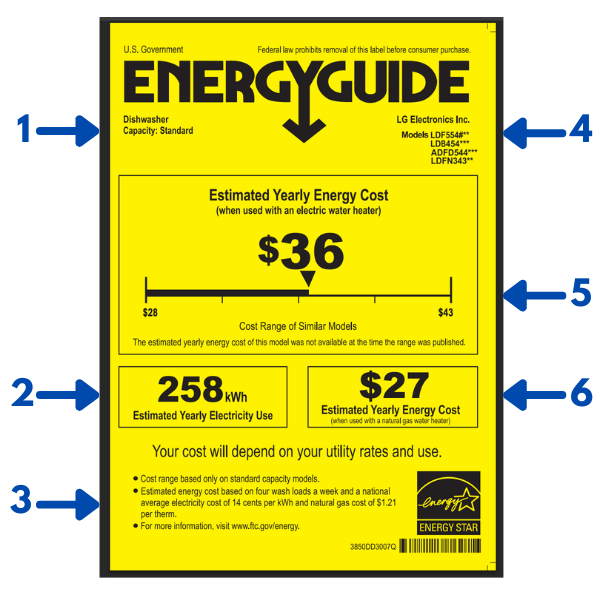
4. The manufacturer, model and size of appliance.
5. The “Estimated Yearly Energy Cost” is approximately what you’ll pay for energy consumption for this model. The yearly estimate includes the electricity to run the dishwasher as well as the energy to heat hot water used by the machine.
6. The “Estimated Yearly Electricity Use” is provided in kilowatt hours (kWh) and is derived from Department of Energy (DOE) dishwasher-model testing.¹
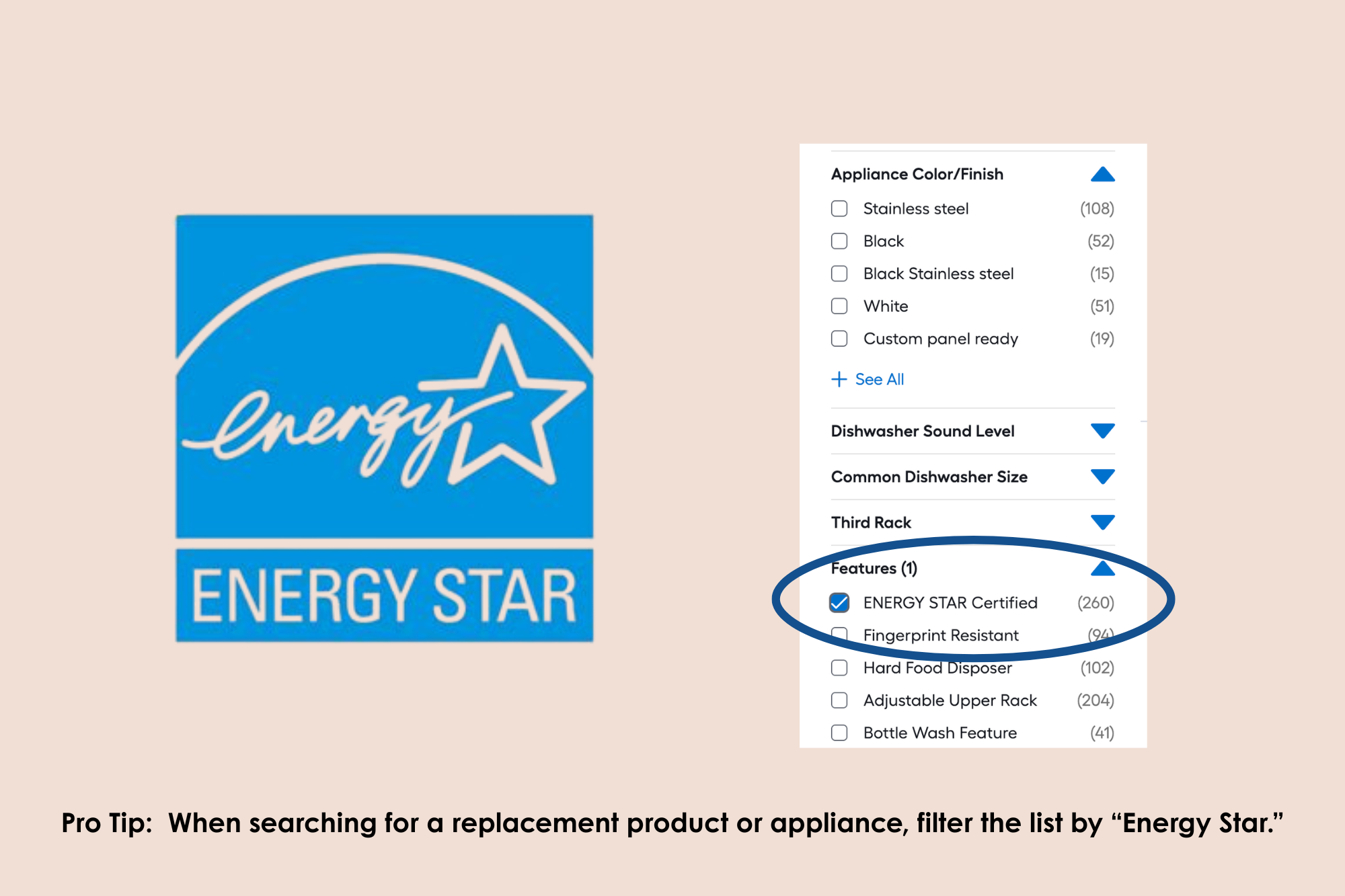
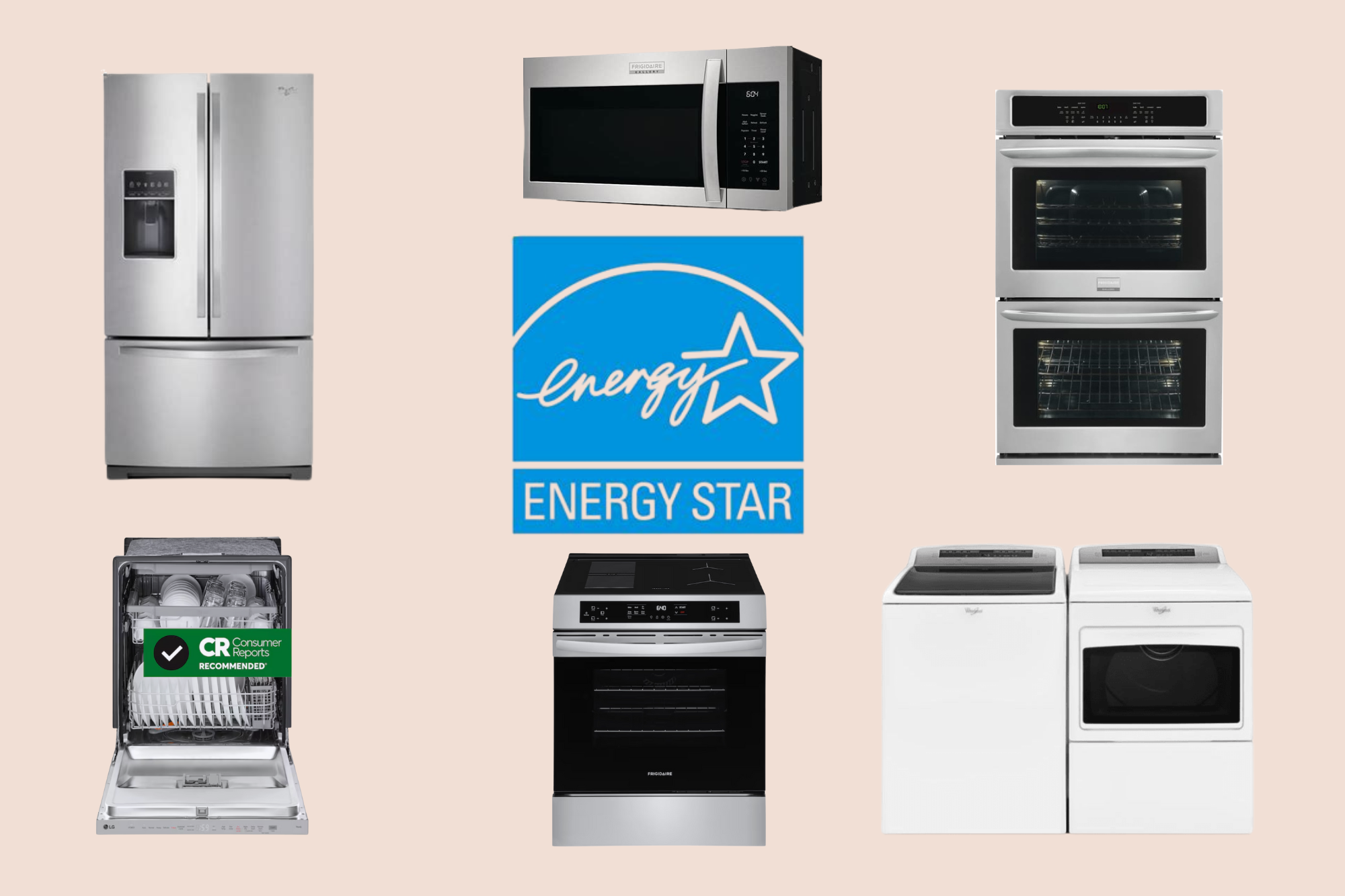
Lighting
Another easy way to reduce energy usage is to exchange halogen, incandescent and fluorescent light bulbs for Light Emitting Diodes (LED) bulbs. These may be more expensive upfront but will last a really long time. In addition to not having to replace the bulbs as often, LED bulbs use much less energy and they do not get as hot as halogen or incandescent bulbs.
Another strategy for reducing energy consumption is to put lights (and other appliances) on timers or sensors so they turn on and off automatically. “Smart plugs” can be purchased for about $10 which will allow you to control the function of the item plugged into it by an app. The app usually allows you to automate the item. For example, I have a humidifier in my bedroom plugged into a smart plug. It is automated to go on at 12:30 am and turn off after 4 hours.
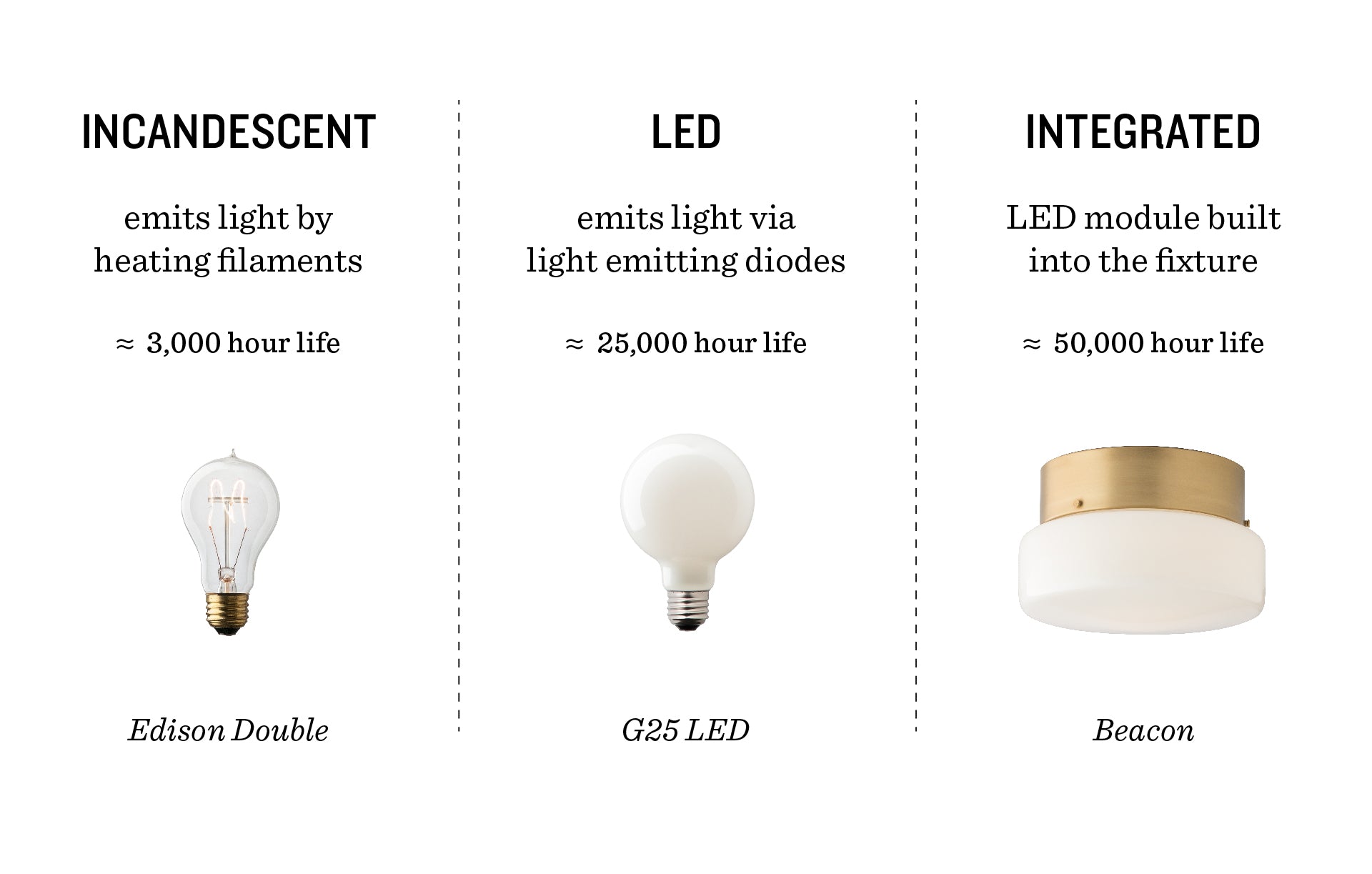
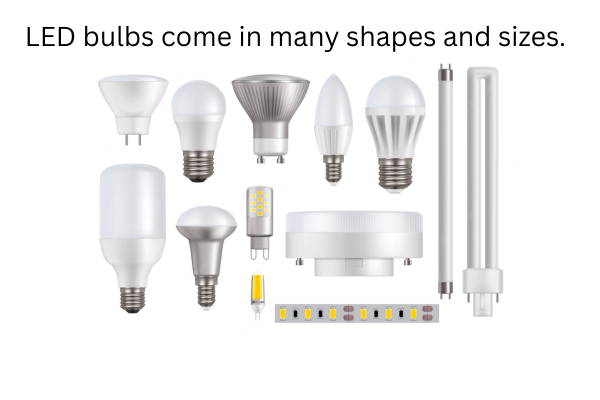
What are lumens? This is the unit measure that describes how bright a light is. The greater the number the brighter the light. We measure how heavy something is in pounds while lumens measure how bright a light is.
As you can see in the table, halogen and incandescent bulbs require higher levels of wattage (energy) to achieve the brighter levels. In fact, an LED bulb of 1300 lumens uses less energy than a regular incandescent bulb at 220 lumens!
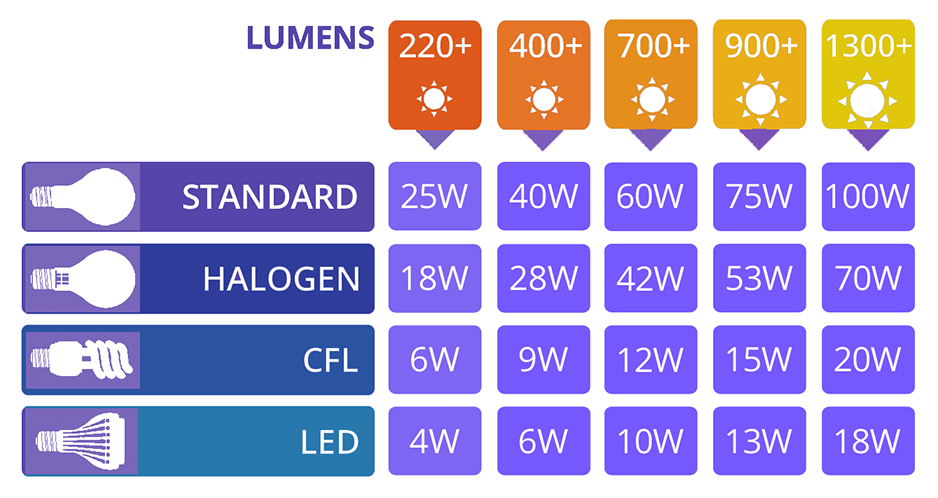
Laundry
How many people (myself included) automatically put their clothing in the hamper without considering if the item is really dirty or can be worn again before laundering? One of my favorite clothing brands Toad & Co has this slogan on their care label, “Dirty is the new clean. Wear more, wash less. Wear it out or pass it on.” I have been trying this energy-water-soap-saving tip by wearing clothes an extra day, when possible.
Once clothes are laundered, using a clothesline or drying rack for some, or all, of your clothing, instead of a dryer by default can also save energy. I have a heavy duty wooden drying rack handmade in Pennsylvania that I use with clothing from each load. This beautifully made drying rack will last for 100 years easily.

Heating and Cooling
Energy can be conserved by the choice of materials used in construction, flooring, window thickness, window coverings, landscaping. Insulation is one of the most cost-effective methods to conserve energy. Again, many of these principles qualify for rebates from energy companies.
If building or remodeling a living space is possible, using designs based on passive solar principles will lead to signifigantly lower utility bills and energy usage. Passive solar design is the practice of designing buildings to naturally collect, store, and distribute solar energy for heating, cooling, and lighting — without using mechanical systems. It’s about working with the environment rather than fighting it. The goal is to create a comfortable, energy-efficient building by making smart use of the sun’s movement and the building’s own features.
For those of use who are not remodeling or building, we can still utilize some of these principles on a daily basis. One example of how I implement passive solar in the winter time is to lower blinds and close curtains (except where sun is coming in) to keep the warm air in and cold air out. As the earth rotates during the day, different windows will be affected. In the summer, I make sure the blinds and curtains are closed to keep the sun out when I am running the air conditioner. At night, I open the curtains and windows to cool the house with fresh air.
When leaving your home for many days
Finally, when leaving my home for extended days or weeks, I unplug small appliances and turn off the power to surge protectors around the house. I was shocked to find out that many appliances are “phantom energy consumers.” This phenomena is also called “vampire power.” It refers to the electricity used by appliances and devices when they are plugged in but not actively in use. Think of the clock on the microwave or a computer in sleep mode. There are estimates that 5-10% of a household’s energy cost is attributed to this vampire power drainage! Power strips or surge protectors are ways to mitigate that issue.
Rebates
When making any changes to your home that will result in energy savings, I recommend looking at your utility provider’s website to see if there are rebates or incentives available. Xcel, my provider even sells smart thermostats and LED bulbs at great discounts. In addition, if you do an internet search for “energy saving rebates near me” you should be able to find city, county, state or federal options, if they are available.
Final Thoughts
As mentioned in the intro, this is a two-part blog. In the next one I will discuss the ways I am electrifying my home so that I can use all of the electric power I am generating with the solar panels on my roof.
What are some things that you do in your life to reduce energy consumption in your home? Please share your thoughts and ideas in the comments below.
¹ U.S. Department of Energy Estimating Appliance and Home Electronic Energy Use.
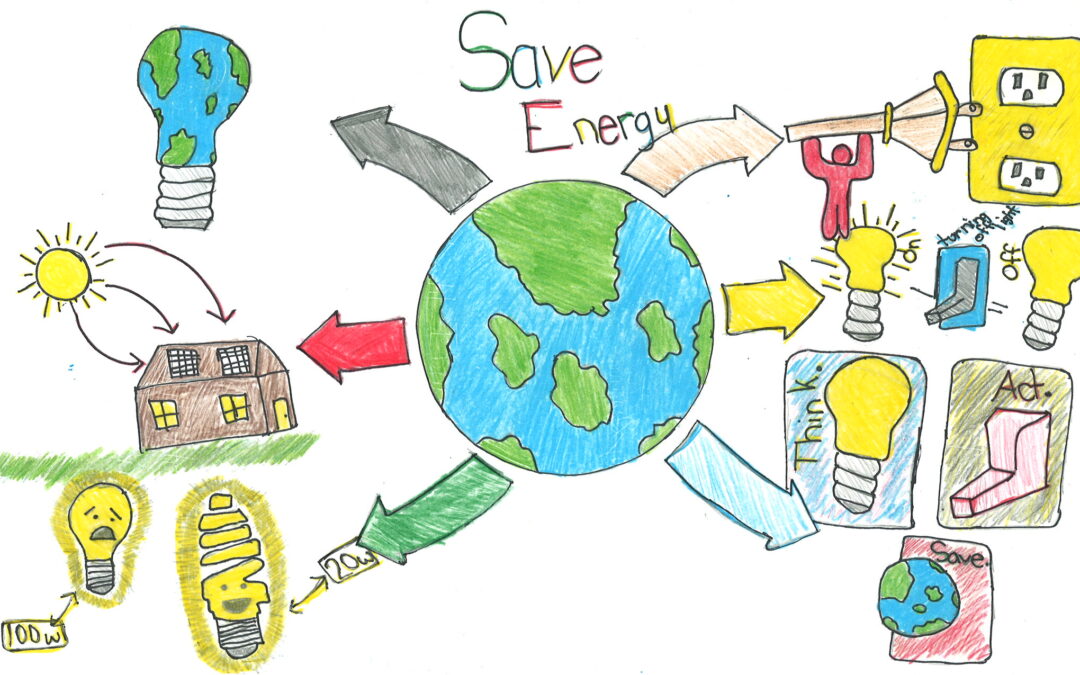
Hiya Barbara! I grew up with the same “rules”. Wash and dry on outside line. Turn off lights when not in use, and darken rooms in summer’s heat. My dad even put heavy plastic on the inside of the windows to keep out the cold and reduce heat exchange. He only used a wood burning stove when he lived in the mountains which I thought, ok, trying to save energy but polluting the atmosphere. Oh dear!
We have solar and realized one needs to have them cleaned yearly to get the best benefit. We send our electricity savings to the Utility company and it reduces our electric bill.
We put in an energy efficient door to the house as well as energy efficient air conditioners and got a tax reduction. Your ideas are great! Doing our part, even if small, is helpful.